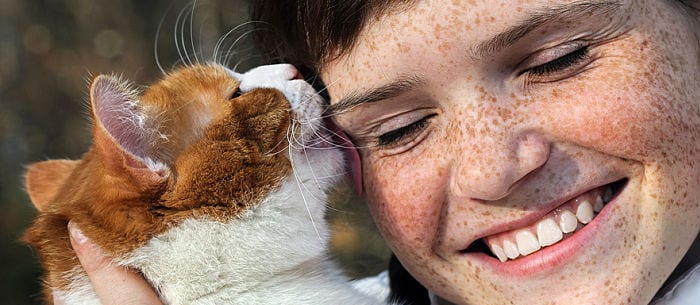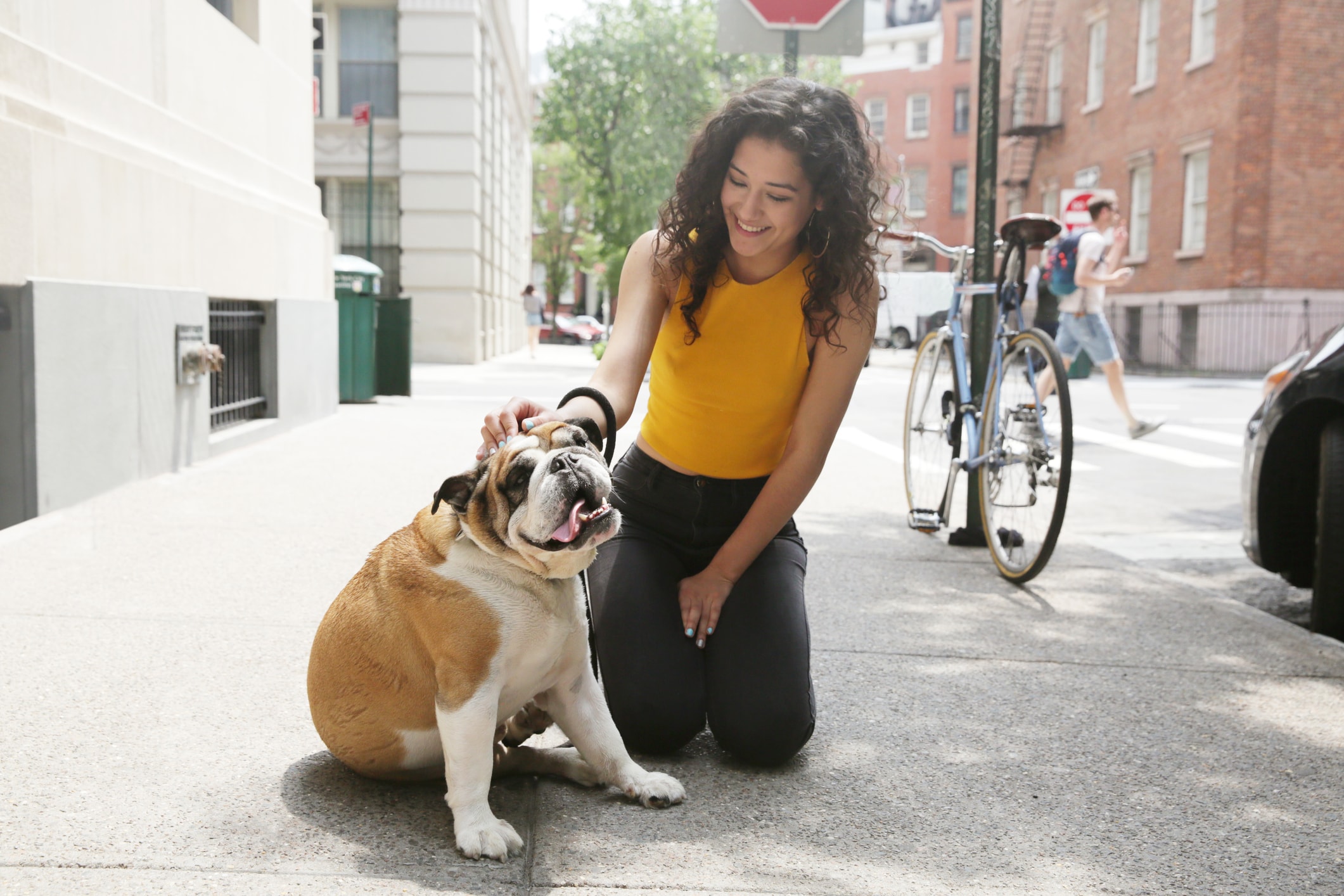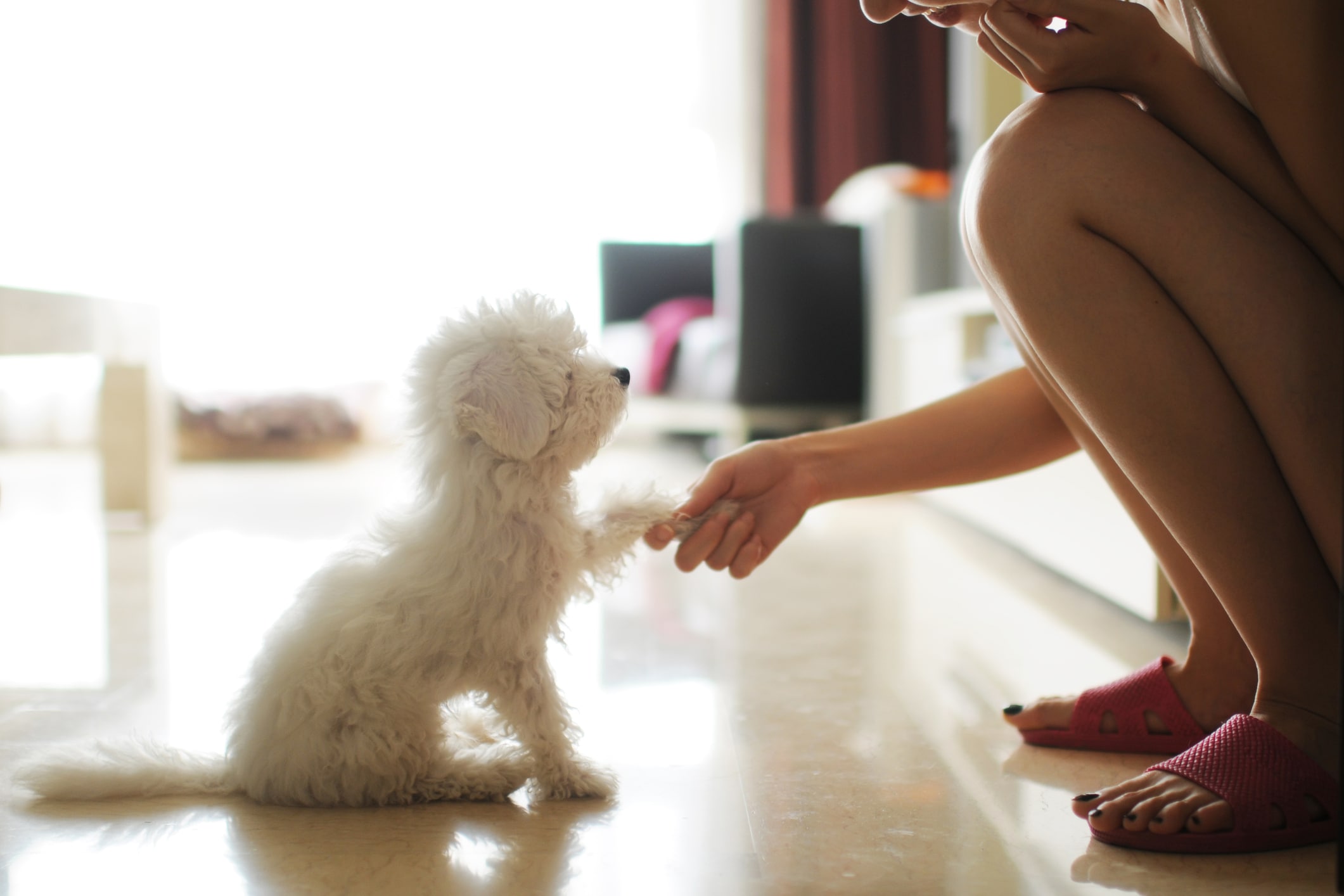It’s obvious your feckless feline rules the roost, but when your cat looks you in the eye while oh-so-gently pushing a photo frame off the shelf, you have to wonder, “Is this normal cat behavior, or is my kitty just plain weird?”
While cats may be mysterious creatures, their communications with you aren’t, say cat experts — that is, if you know what to look for and what they mean. Here, animal behavior consultant Dr. Peter L. Borchelt and The Cat Therapist, Carole Wilbourn, provide some clues to 20 common cat behaviors:
- Tall Tails
“If your cat walks into a room with tail held high and fur flat, it’s a greeting like, ‘Hi, I’m here,'” says Borchelt.
- Tall Fuzzy Tails
If, instead, a cat’s erect tail is accompanied by fuzzed-out fur, he may feel angry or afraid.
- Tall Quivering Tails
This is a sure sign your cat is ecstatic.
- Thrashing Tails
A cat whose tail is whipping back and forth is agitated and angry.
- Twitching Ears
“If your cat is agitated, irritable or frightened, the ears may twitch backward, sideways or flatten back,” says Wilbourn. Kitty ears have more than two dozen muscles and readily display a multitude of emotions.
- Swiveling Ears
They may not understand your words, but they absolutely want to hear what you say. Attentive kitties with swiveling ears are on alert and listening.
- Arched Back
“If your cat assumes an arched pose with puffed-up fur, that’s a fear response,” says Borchelt, although sometimes it’s not.
- Arched Back Part II
“An arched back with puffed-up fur, accompanied by hopping, is a prelude to play,” Borchelt adds. A surefire way to tell the difference? “If this posture is accompanied by hissing, it’s a clear signal the cat feels threatened,” he adds.
- Hiding
If a cat is hiding or spending time holed up in a closet, that may mean she is sick or in pain and should be seen by a veterinarian, says Borchelt. “Don’t make the mistake of assuming your cat is depressed. Physical illness should always be ruled out first,” he advises.
- Kneading Your Tummy
Love hurts, especially when your cat shows adoration by tap dancing on your belly. “Tummy kneading lets your cat relive the joy they felt when nursing,” explains Wilbourn. “It represents comfort, love and pleasure.”
- Full-Press Body Rub
Your cat rubs against you — and everything else — to mark her territory. She has scent glands on her head and at the base of her tail. She will rub her scent glands on you, the furniture, the doorway and everything else to mark it as hers (you know, in case other cats come sniffing around).
- Head Rub
Known as bunting, your cat may greet you head first to show trust, companionably sharing her scent with you.
- Lip Rub
This is another common, territorial cat behavior, marking with just the scent glands of the head. Cats usually do this to objects as opposed to people or other cats.
- Potty Problems
“If a cat is urinating everywhere, it may be a urinary tract infection,” says Borchelt, who recommends ruling out illness. “It could also be an issue with the litter box. If cats don’t like the litter’s feel, they run out of the box and won’t dig and cover up. Try different litters until you find something your cat likes.”
- Spraying
“This is typically a territorial response to an outdoor cat or a new cat in the house. If two cats are spraying in response to each other, this behavior can be tough to eradicate. If it’s an outdoor cat, cover the window so your cat’s view is obstructed,” suggests Borchelt.
- Sleeping Solo
Just like people, some animals prefer to sleep alone. “Those that like to cozy up like intimacy. Those that don’t may fear intimacy or aren’t comfortable with it,” says Wilbourn.
- 40-Yard Dash
“When a cat is play-deprived, they may stalk you, dash at your feet and run away. It looks predatory but signals they need more play time,” says Borchelt, who suggests buying new toys and spending time engaged in play.
- Scratching Furniture
An innate behavior, cats must scratch to keep claws and muscles in shape. If your furniture is getting a workout, well-placed scratching posts are the cure.
- Plant Chewing
Houseplant nibblers may be trying to get your attention or working to soothe an icky tummy or bring up a hairball. Make sure your plants aren’t poisonous!
- Sharing the Spoils
Outdoor cats may show their love by bringing newly deceased birds or mice to, um, share. Enjoy that — as well as all the other wonderfully not-so-mysterious cat behaviors!
Corey Kagan Whelan is a freelance writer in New York who has been owned by at least one cat.





